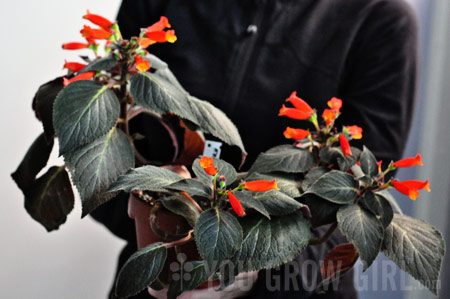
Yesterday afternoon I was invited into the apartment of a fellow Parkdale resident to check out her collection of fascinating and unusual plants. The visit brought the plant junky in me out in full force. I went home conspiring to get my hands on a few of those amazing plants myself and then spent the remainder of the afternoon rearranging and caring for the gazillions of houseplants I do have. Visits to other peoples’ gardens never fail to motivate me to do better by my own plants.
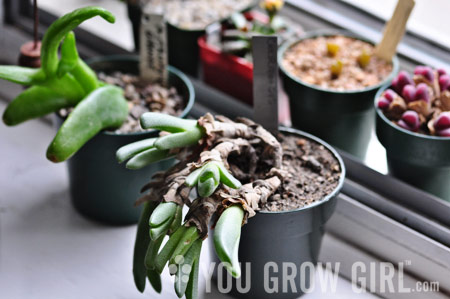
Erika collects alpines, Mesembs (conophytum & lithops aka living stones are examples), Gesneriads (not African violets), orchids, and euphorbias. Looking back on our conversation, I’m not completely certain that she is exclusive to those plant families. Most of her collection just seems to fall within those categories. When I asked her what inspired her collection, she replied that she has always loved diminutive plants. The perfect-sized plants for an apartment dweller.
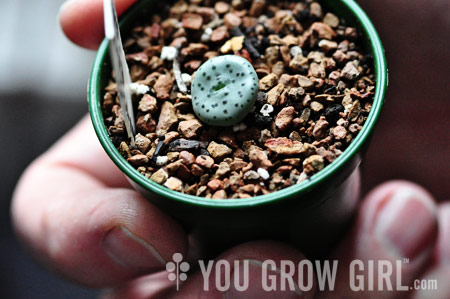

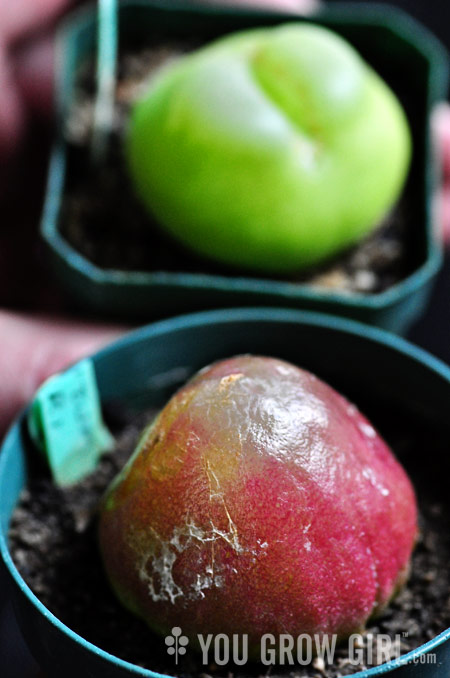
Say what? These freakish things remind me of jelly candies or those stinky jelly air fresheners everyone had in their bathrooms in the late 70s. When I was a kid, I could never help opening up the plastic cover and poking them. I REALLY wanted to poke these too but that would have been very rude. The flower (yes they do flower) comes up between the two “leaves.” I can barely distinguish where that is on the red one.
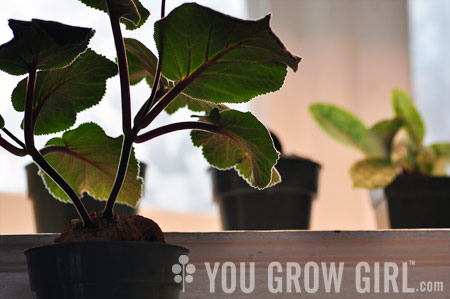
What makes Erika’s indoor garden so inspiring isn’t just that she has excellent taste in plants and is growing some incredibly fascinating specimens, but that she has made room for her collection in such a small space. Erika is living proof that with a bit of ingenuity, you do not need to settle for the standard tough as nails houseplants found in every Home Depot just because you live in an apartment and don’t have a greenhouse. Erica’s plants are all healthy and thriving, and she is doing it in the kind of conditions many would consider hopeless.
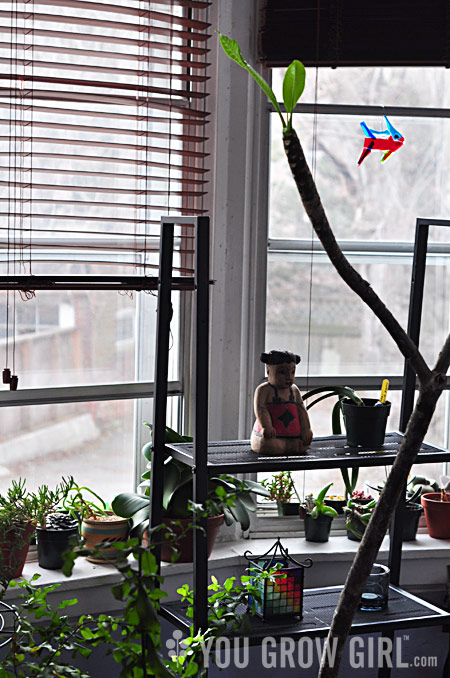
One very important tip I learned from Erika is that conophytums and lithops actually like a cold window during the winter months. Turns out, that has always been my mistake in the past. I coddle them in warm spots under grow lights where they can’t get a proper dormancy. Lesson learned. This gives me a renewed sense of hope that I can go beyond the one lithops I have managed to keep alive since the fall.
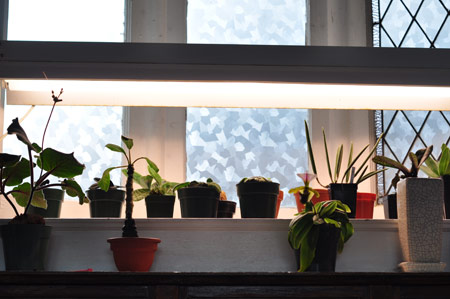
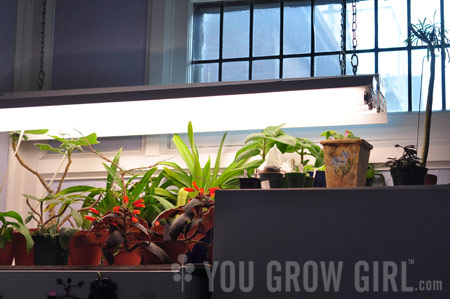
Here are a few more photos to whet your appetite for new house plants.
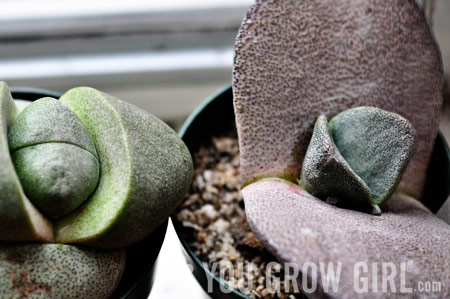
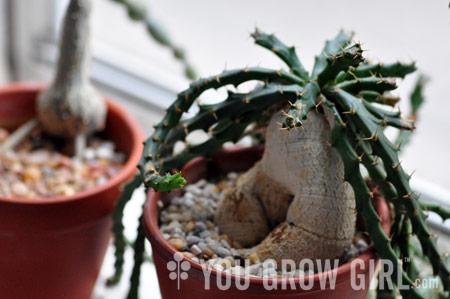
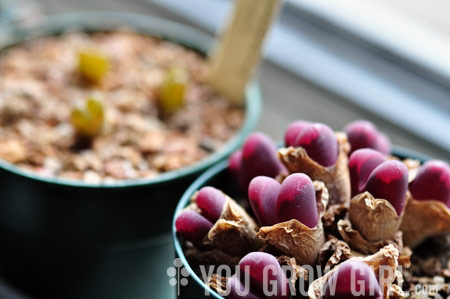
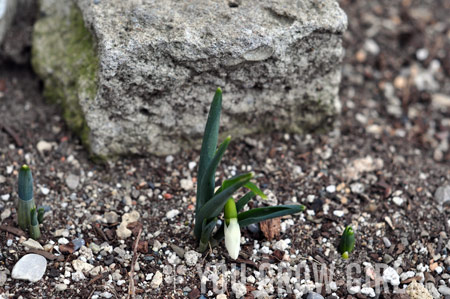
Outside, Erika has several alpine troughs just beyond her door. They are currently covered up and protected for the winter but I did catch this tiny galanthus (aka snowdrops) in bloom. Hope for spring!
This apartment garden is crazy inspiring! Sometimes you feel like you could give up gardening after a round of failures, but every spring the gardener within is itching it start anew. Thanks for continuing to inspire us to keep going.
This is amazing!
Makes me want to go beyond Sanseveria and philodendrons in my little collection.
Wow! I’ve never seen conophytums before and now I want some, too. Thanks for sharing!
Wow I love that red Conophytum!
Snowdrop! Wow, the excitment of the rest of the post and its fantastic plants vanished with the sight of that Snowdrop. Spring! Yea! I’m not ashamed to admit I only love my houseplants during the winter and they are a poor substitute for my tomatos and tulips.
Meighan: I know! I keep coming back to look at it. So vibrant.
Alissa: My poor houseplants go neglected through the growing season but I REALLY come to appreciate them when the ground is frozen.
Now that IS inspiring! I love all the Conophytums, I’ve never seen anything quite like them. Now, I have to try to find some. Somewhere. Does she purchase her plants online? I can’t imagine you can find half of what she has just anywhere.
Kelly: The tricky thing with unusual stuff like this is you’ve got to join clubs like the Cactus and Succulent Societies to get access. Or at least go to their yearly sales if they allow non-members. You just can’t expect to walk into a Home Depot and find one.
I am thinking of sucking it up and joining some more groups this year. I say this every year but this year I’m going to do it.
I sometimes find interesting stuff for sale at Botanical Gardens and you can get some online, although your best bet is often starting from seed.
Very inspiring! Thanks for the great tour.
She has a really unique collection, especially for an apartment! I’m really impressed by the troughs. Join your local chapter of the North Am. Rock Garden Society (nargs.org) to get in on great member plant sales, the annual national seed exchange (for nat’l members), and the knowledge of other enthusiastic collectors of tiny but interesting things. Thanks for sharing, especially your wonderful images.
Thanks for correcting the spelling of my name Gayla. I enjoyed your visit and you are welcome anytime. Thank you to everyone who posted a comment about my collection of plants. These plants bring great joy and beauty to my life.
I am most amazed by the frangipani. I once got a piece of one (on sale in the French Quarter of New Orleans!) and tried to root it at home in NC without success. Frangipani are gorgeous trees with such divine flowers – I’m wondering how long Erika has had hers and whether it has flowered?
Daricia: She told me how long but I forget now. It was at least a few years if not longer. And it has flowered.
Hi Gayla, Just a few corrections that I meant to send you earlier. The red species name is Conophytum Burgeri. The red living stone next to the Conopyhtum is Lithops Optica Rubra. The Euphorbia BTW is Euphorbia Microcantha. Happy Growing! Congrats on your book. Your Blog is lovely and celebrates the diversity of the Plant Kingdom. Cheers Erika!
Hi Gayla! This post is lovely! I, too, love these weird and interesting houseplants. We are really blessed here in Austin to have access to all of these strange cacti and succulent cultivars. I know you come to visit our town sometimes, and I wanted to tell you where to go and look for them. The Great Outdoors on South Congress, The Natural Gardener in Oak Hill and Barton Springs Nursery in West Lake Hills are all great sources for these types of plants. Also, there is another lesser known nursery called Garden of the Ancients in Manor, a small town right outside Austin, whose speciality is cacti. They literally have hundreds and hundreds. Come and visit!